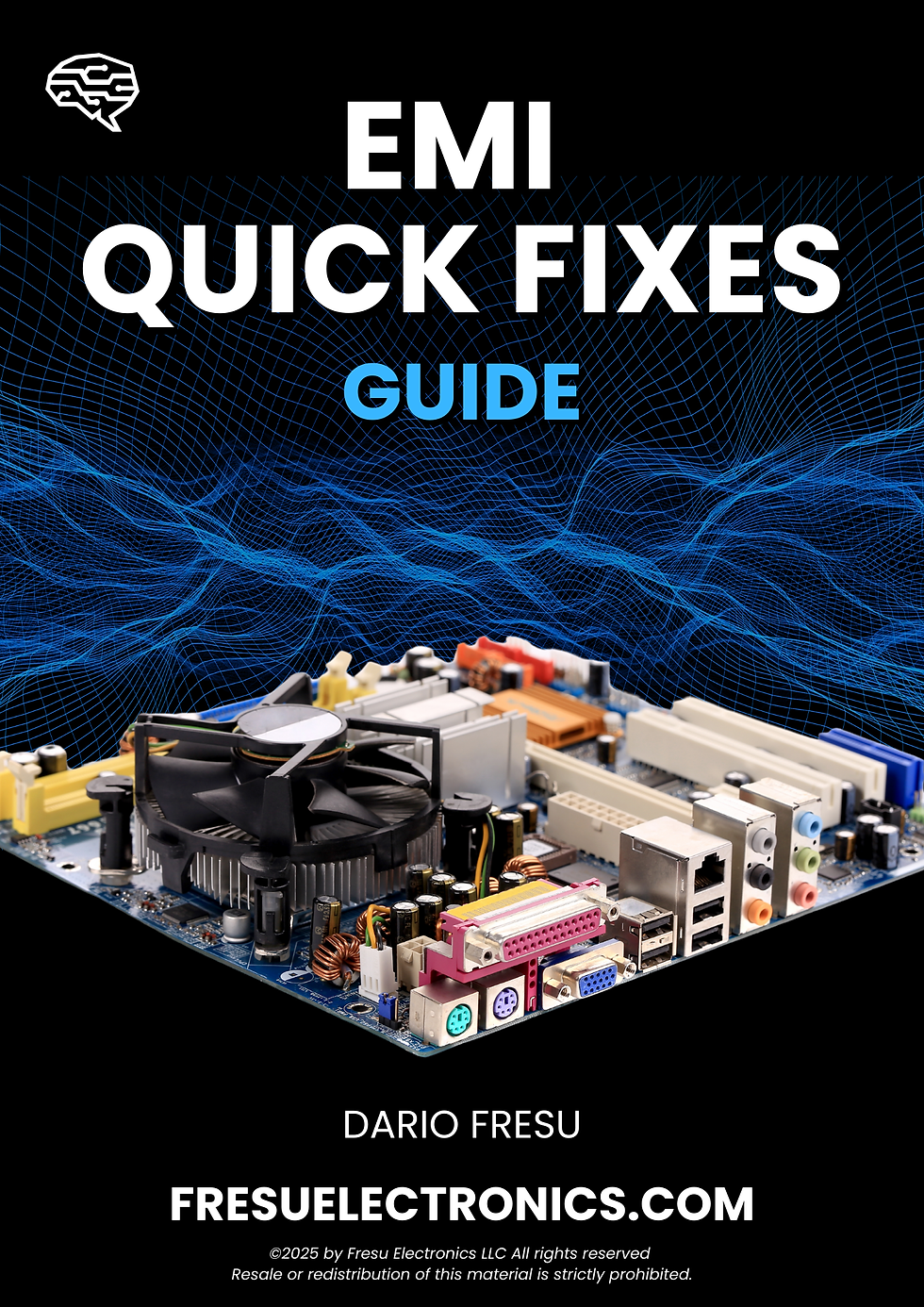The Essentials of Electromagnetic Compatibility Training
- Dario Fresu

- Apr 11
- 4 min read
Electromagnetic compatibility (EMC) is crucial across numerous industries today. With the proliferation of electronic devices and systems, ensuring that these devices can operate without causing or experiencing electromagnetic interference (EMI) has never been more critical. This article explores the essentials of electromagnetic compatibility training, addressing its importance, contents, and key components that can help individuals and organizations understand and apply EMC principles effectively.
The Foundation of Electromagnetic Compatibility
Electromagnetic interference (EMI) occurs when unwanted electromagnetic energy disrupts the normal operation of electronic devices. It can arise from various sources, including power lines, radios, microwaves, and even electric cars. Conversely, electromagnetic compatibility (EMC) refers to the ability of electrical equipment to function as intended in its electromagnetic environment without causing or being subjected to interference.
Understanding these concepts is vital for engineers, designers, and manufacturers involved in electronics. For instance, when designing a new product, it's essential to consider how that product will interact with other devices in the same environment. Failing to account for EMI can result in a product that may fail in the field due to interference from other devices.

The Importance of Electromagnetic Compatibility Training
As technology continues to advance, the need for effective EMI EMC training becomes more urgent. There are several reasons why this training is essential:
Regulatory Compliance: Many industries are subject to strict regulations regarding electromagnetic emissions. Training ensures that products meet these standards, avoiding costly recalls or fines.
Product Reliability: Devices that are not designed with EMC in mind can exhibit erratic behavior, leading to product failure. Training professionals in EMC principles promotes reliability in product design.
Cost Savings: Understanding EMI EMC issues can help avoid expensive redesigns and testing phases. Proper training can lead to significant cost savings over a product's lifecycle.
Market Competitiveness: Companies that prioritize EMC in their design process are more likely to produce reliable products, giving them an edge over competitors.
Incorporating this knowledge into the development process not only ensures compliance and reliability but can also create a robust reputation for high-quality products.

Key Topics Covered in EMI/EMC Training
A well-structured EMI/EMC training program covers various topics that are essential for professionals in the field. Here are some key areas typically included:
1. Basics of EMI and EMC
Understanding the fundamental principles of electromagnetism is the first step in mastering EMC. Participants should learn:
The nature of electromagnetic waves.
How these waves propagate and interact with various materials.
2. Design Techniques to Mitigate EMI
Effective training will include practical strategies to design products with minimal EMI, such as:
PCB Design & Layout Techniques: This involves creating the arrangement of electronic components on a printed circuit board to optimize performance and minimize interference.
Radiated Emissions: Techniques to reduce unwanted electromagnetic radiation from devices, ensuring compliance with regulatory standards.
Conducted Emissions: Strategies to limit the propagation of noise through power and signal lines, preventing interference with other devices.
ESD - Electrostatic Discharge: Implementing measures to protect sensitive components from damage caused by electrostatic discharge, enhancing overall reliability.
3. In-Depth Exploration of Advanced Topics
For seasoned professionals seeking to deepen their expertise, advanced topics can encompass a range of critical areas:
Emerging Technologies and Materials in EMC Design: Analyzing the latest innovations that enhance electromagnetic compatibility.
Comprehensive Case Studies: Investigating historical failures caused by electromagnetic interference (EMI) to extract valuable lessons and best practices.
Regulatory Standards and Compliance: Understanding the evolving landscape of EMC regulations and how to ensure compliance in product design.
Advanced Simulation Techniques: Utilizing cutting-edge software tools for predictive modeling and simulation of EMC behavior in complex environments.
Interdisciplinary Approaches: Exploring the integration of EMC strategies with other engineering disciplines, such as mechanical and software engineering, for holistic product development.
By delving into these advanced topics, training programs can empower professionals with the critical insights and practical skills required to effectively address complex EMC challenges in today's technology-driven landscape.

The Importance of Hands-On Experience in EMC Training
Hands-on experience plays a crucial role in mastering Electromagnetic Compatibility (EMC) concepts. Training programs that emphasize practical applications equip participants with the skills necessary to navigate real-world challenges. Such programs often include:
Conducting PCB design reviews to identify potential issues early in the design process.
Engaging in 1:1 discussions with mentors and specialists to gain insights and tailored advice on EMC strategies.
Participating in real-world simulations that replicate actual EMI scenarios, allowing for experiential learning.
These hands-on experiences not only enhance understanding but also foster the ability to apply theoretical knowledge effectively. Participants learn how to identify potential EMI sources, implement design techniques, and conduct compliance testing, ensuring they are well-prepared for real-world EMC challenges.
Conclusion: Investing in EMI EMC Training for Future Success
As the world becomes increasingly reliant on electronic devices, EMI and EMC issues will continue to grow. Investing in quality training equips professionals with the skills needed to navigate these challenges. Organizations can significantly benefit from clearer communication in design processes, regulatory compliance, and improved product reliability.
For those looking to deepen their knowledge in this field, consider enrolling in an EMC/EMI course, such as the one offered by Fresu Electronics. This course can provide the skills necessary to understand and implement effective EMC practices in your work.
In summary, the essentials of electromagnetic compatibility training are not just about understanding theory; they’re about applying that knowledge in practical, real-world situations. As technology continues to evolve, staying informed and trained in EMC will remain a cornerstone of successful electronics design and manufacturing.
.png)










Comments